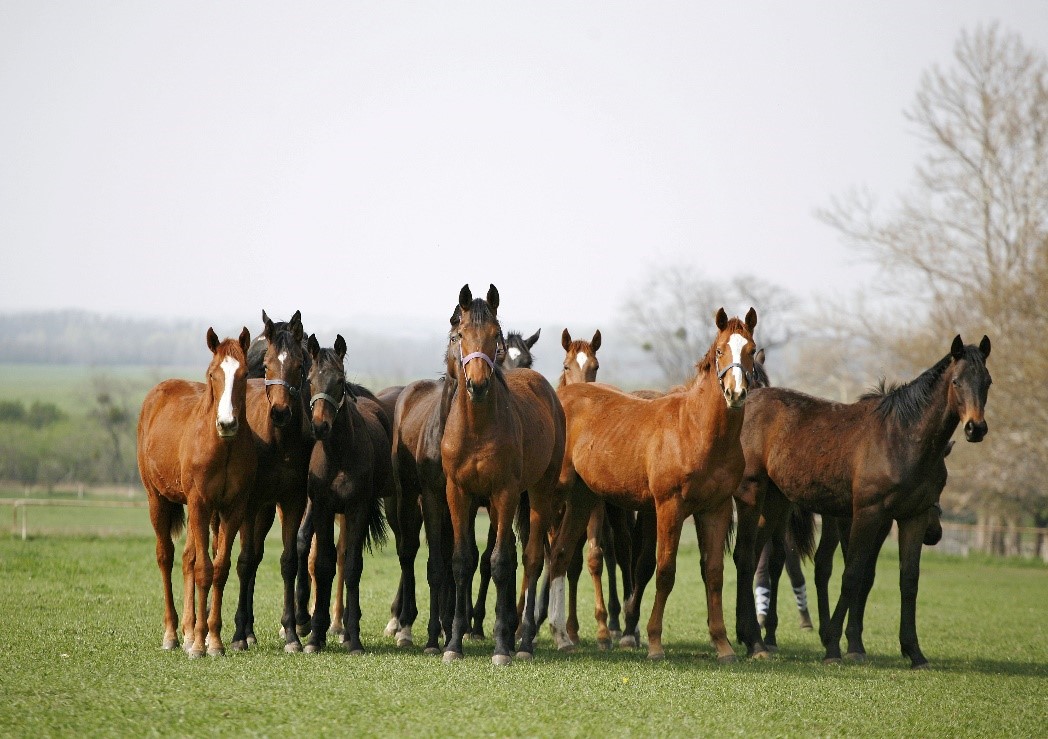Should I stable my horse?

Stabling horses may be convenient in some situations, but it is generally not good for horses. Horses are social, herd animals and they are not evolved to live alone. Isolating and confining horses in stables restricts their movement, social interactions, and ability to graze, which negatively impacts horse welfare. The RSPCA acknowledges that there may be occasions where stabling horses is necessary, or unavoidable, e.g. under veterinary direction. However, this should only be done for a limited time and only as necessary for immediate health concerns.
Movement
In the wild, horses freely travel around large home ranges spanning multiple kilometres [1]. Within home ranges, horses will move around grazing sites, watering sites, shade, windbreaks, rolling sites, and low insect areas [1]. Opportunities to choose where they spend their time, what activity they engage in, and who they associate with is an important aspect of good animal welfare [2]. Horses typically have fewer choices available to them in a stabled environment compared with at pasture.
The confined space in some stables may discourage or restrict horses from performing important rest and comfort behaviours, such as lying down or rolling [1]. Horses housed in close confinement spend less time lying down than horses with more space [3].
Social interactions
When given the opportunity, horses are social animals who may rest and graze near each other, groom each other and play together. Horses may stand nose to tail during hot weather, so their tails can flick the flies away from each other’s faces. In cold weather, horses often stand close together to keep each other warm. They build strong bonds with certain horses in the herd. Foals require socialisation from a young age to develop their social behaviours with other horses [1].
Allowing horses to have social contact with other horses has been associated with increased ease of handling and reduced physiological stress [4]. Minimising changes to the social group is important to reduce mental stress and the risk of aggression and injury, which can occur whenever there is a new introduction into the group [1].
Grazing behaviour and roughage
Horses have evolved to meet their nutritional needs by consuming small amounts of roughage or forage regularly throughout the day (grazing behaviour) [1]. In the wild, horses will spend approximately 60% of their time eating [1]. In comparison, stabled horses fed a restricted fibre diet may spend as little as 15% of their time feeding [1]. Access to pasture, fibrous feed, and opportunities to feed frequently are considered to reduce the risk of stomach ulcers in horses [5]. A ‘slow’ or ‘trickle’ feeding system may increase the amount of time a stabled horse spends consuming feed, reducing the risk of stomach ulcers. Slow feeders have also been associated with indicators of improved welfare such as a reduction in abnormal repetitive behaviours [6].
Abnormal, repetitive or unwanted behaviour
Stabling horses is thought to increase the risk of repetitive or abnormal behaviours [1]. When horses are prevented from engaging in highly motivated behaviours such as eating high volumes of roughage (grass or hay), moving in an unrestricted manner, and interacting socially, they may perform more unwanted behaviours such as chewing on stable fixtures, rocking from side to side (known as ‘weaving’), or pacing [1,7].
RSPCA position on stabling horses
The RSPCA recommends that horses should have access to ample space at pasture and a socially stable group of other horses as much as possible. Shelter from wind and sun should be included. If horses must be closely confined, then plenty of roughage in the form of hay should be provided in the diet. Confined healthy horses should be able to see and safely interact with other horses, be exercised regularly, and be provided with deep, clean and comfortable bedding.
References
McGreevy P (2012) Equine Behavior – a guide for veterinarians and equine scientists. Second edition. Saunders Elsevier London.
Littlewood KE, Heslop M V, Cobb ML (2023) The agency domain and behavioral interactions: assessing positive animal welfare using the Five Domains Model. Frontiers in Veterinary Science 10.
Kjellberg L, Sassner H, Yngvesson J (2022) Horses’ resting behaviour in shelters of varying size compared with single boxes. Applied Animal Behaviour Science 254.
Yarnell K, Hall C, Royle C, Walker SL (2015) Domesticated horses differ in their behavioural and physiological responses to isolated and group housing. Physiology & Behavior 143:51–57.
Sykes BW, Hewetson M, Hepburn RJ, Luthersson N, Tamzali Y (2015) European College of Equine Internal Medicine Consensus Statement-Equine Gastric Ulcer Syndrome in Adult Horses. Journal of Veterinary Internal Medicine 29:1288–1299.
Rochais C, Henry S, Hausberger M (2018) “Hay-bags” and “Slow feeders”: Testing their impact on horse behaviour and welfare. Applied Animal Behavaviour Science 198:52–59.
Roberts K, Hemmings AJ, McBride SD, Parker MO (2017) Causal factors of oral versus locomotor stereotypy in the horse. Journal of Veterinary Behavior: Clinical Applications and Research 20:37–43.
Was this article helpful?
This work is licensed under a Creative Commons Attribution-NonCommercial-NoDerivatives 4.0 International License.


